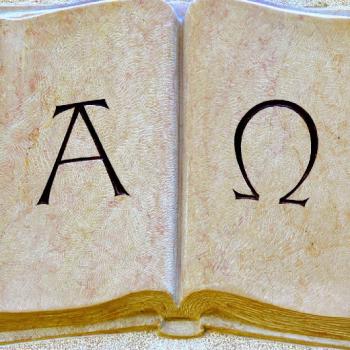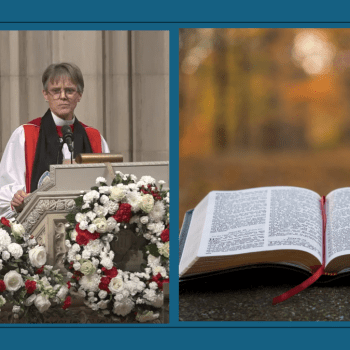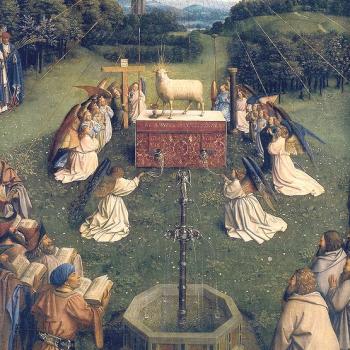One night there was inexplicable, explosive joy. The kind of joy that sends its ripple effects not only around the world but the news of which transforms the hearts of generations to come.
The Savior was born. A heavenly host of angels announced his arrival, echoing the message of the prophets of old and the longing of humanity for centuries.
Yet several nights later, there was terror and excruciating heartache—Herod had arranged for a systematic killing of innocent Hebrew boys under the age of two. Only God knows how many little ones were massacred at the royal command, at the whim of a king who would not abide a future rival.
Generations later, we remember the heartaches of those parents whose children were taken from them so violently. For Catholics, in our liturgical calendar, we remember both; our Christmas season exults the Savior's coming, and solemnizes his human peers that were lost because selfishness considered their lives expendable. The slaughter of the innocents—little ones who were martyred on behalf of the God-man who was in their very midst—are memorialized annually on December 28th, the Feast of the Holy Innocents. In their deaths, we recall that even though the Christ was born into their land, his presence was not yet born into the hearts of all those for whom he had come.
It is the same for us today. Unless Jesus is embraced by us we cannot dissuade the sin that is born from the free will of those hell-bent on rejecting the Savior's way, truth, and life.
We have had a hard lesson in that this week.
In this third week of Advent—the one that begins with the call of Gaudate!, to rejoice, for the Lord is near!—it is hard to reconcile the mourning and weeping of a nation in the aftermath of the shootings at Sandy Hook Elementary School in Newtown, CT, with the joys of Advent and the coming of Christmas.
And yet, that very coming of the God who saves -- Christ Jesus --is the very heart of the hope of all who mourn with a magnitude of grief that, for most of us, is beyond our ability to fathom.
This week, many Americans came against something from which we need saving.
We cannot face the gruesome depravity that is in our midst. We want to look away. We want to go back to what we knew before what we know now. And for the bravest among us, we want one more chance to go back in time, to turn the tide, to do the one thing that may have stopped this evil from befalling us, and others.
The slaughter of innocents will always have that effect on us.
It is the same for Jesus.
In the fullness of time, it was Jesus who looked down from heaven at our depravity and destitution, our evils and ills, and turned to the Father and said, "No more. Send me."
He knew there was only one way to end sin and death: it was to first enter into it, defeating it from the inside out, and then make a way for others, by grace, to follow in his path. But his first step would be to win our hearts as an innocent, Holy Babe.
In the end, it was the most painful of paths, excruciating to endure, but that was the true cost of Love Incarnate: The Innocent One, the Blameless One, the Father's Son, was brutally and violently cut down by crucifixion. But in his Cross, we see something more.
Blessed John Paul captured it when he said:
The Cross, which seems to rise up from the earth, in actual fact reaches down from heaven, enfolding the universe in a divine embrace. The Cross reveals itself to be "the centre, meaning and goal of all history and of every human life" (Evangelium vitae 50).
Jesus had us all in mind and heart when he died. From those little ones caught up in Herod's web of slaughter back when Jesus was an infant to the little ones who died this past week. Jesus knew their pain and their perilous end. What's more, he knew each one's name, personally. And the names of their persecutors.
Jesus was born that we might live, regardless of our length of days on the earth, and He would die and rise so that we might be delivered innocently into His arms; He who knows us and loves us most intimately, and whose heart withstood bloodshed and rejection, tears and fears, for our sakes.
This is a God who enters into our broken hearts and unfathomable pain.
To receive Jesus Christ means . . . believing that in the history of humanity, even though it is marked by evil and suffering, the final word belongs to life and to love, because God came to dwell among us, so we might dwell in him. . . .
Stop and look with wonder at the infant Mary brought into the world, wrapped in swaddling clothes and laid in a manger: the infant is God himself who has come among us. Look at Jesus of Nazareth, received by some and scorned by others, despised and rejected: He is the Saviour of all. Adore Christ, our Redeemer, who ransoms us and frees us from sin and death: He is the living God, the source of Life. (John Paul II, Message for the 15th World Youth Day, 1999)
May we hold on tightly to this Holy Babe who taught us how lean into him under the weight of our own crosses. May the wood of the manger teach us about the wood of the cross.
12/2/2022 9:05:39 PM





